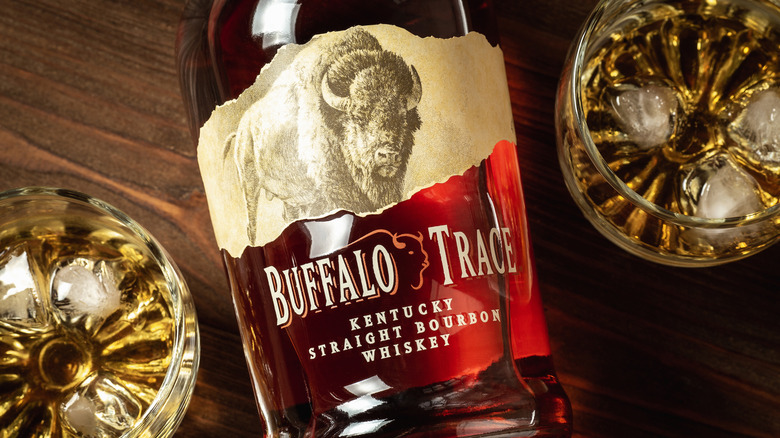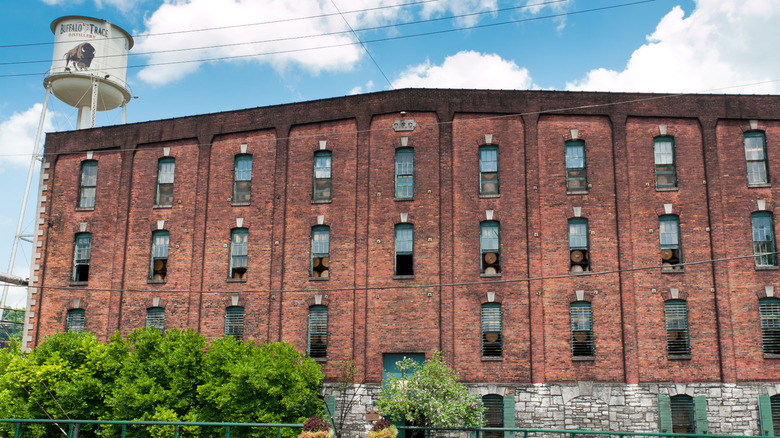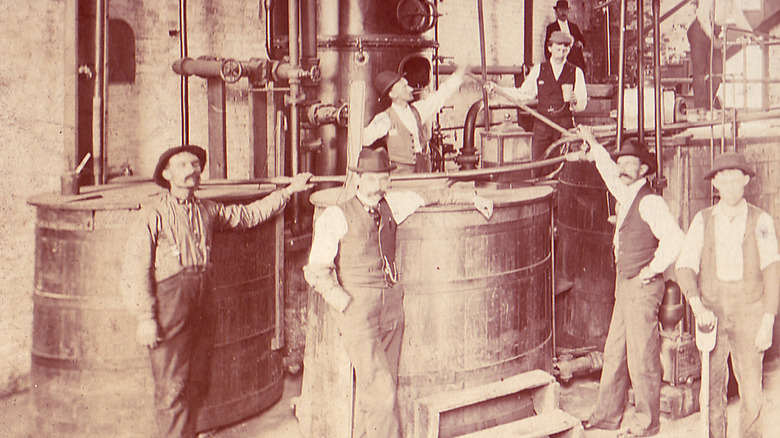Why The Buffalo Trace Distillery Is A National Historic Landmark
Like all the other bourbons made in Kentucky, which comprise 95% of all bourbon production worldwide, Buffalo Trace proudly stakes its claim in the Bluegrass State. But unlike the company's spirited counterparts, this distillery stands alone in at least one regard: it's America's oldest continually operating distillery. It also holds a U.S. National Historic Landmark (NHL) designation.
With only 2,600 NHL properties spanning the entire United States, having that designation says a lot about the distillery's place in American history, culture, prestige, and heritage. After all, the NHL program, managed by the National Park Service (NPS), covers more than just surviving buildings from days gone by — it also pays homage to historical objects, districts, sites, and various structures.
Landing a spot on that revered list requires some pretty serious ties to what the NPS calls "an outstanding aspect of American history and culture." While centuries of still-functional architecture span 130 acres on the family-owned Buffalo Trace property, the real intrigue comes from whiskey-making lore during significant eras of a rising nation.
Living bourbon history
When Buffalo Trace Distillery finally received its National Historic Landmark designation in 2013, it had been part of Kentucky whiskey-making for 240 years, according to a company news release. The listing submission applauds its highly intact pre-, during-, and post-Prohibition distillery resources, structures, and technology, providing a living history of the American whiskey industry over time.
One of those significant time periods is the Prohibition years of 1920 through 1933 during which America "went dry" following ratification of the 18th Amendment to the U.S. Constitution. Buffalo Trace was long established by then, but alcohol distillation became illegal. It would become a blow to the entire industry — unless you happened to be Buffalo Trace, then named the George T. Stagg Distillery. It was one of only four distilleries legally allowed to operate under a "medicinal whiskey" waiver.
Even the company name Buffalo Trace, which went through several incarnations, nods to the founding and expansion of America. According to a company timeline, pioneering frontiersman Daniel Boone himself made his way in 1771 to the Kentucky area now comprising the distillery, following what was known as a "buffalo trace" roadway. Little did he know those coming after him would create the now-legendary world of Kentucky bourbon whiskey.
A buffalo trace journey to world-renowned bourbon
Herds of migrating buffalo, or bison, literally stomped paths into the untamed lands of early America, leaving rugged "buffalo trace" passages for Native Americans, and later, scores of explorers, settlers, farmers, and would-be entrepreneurs. That included Commodore Richard Taylor, whose descendant Col. Edmund Taylor, Jr, earned the title "Father of the Modern Bourbon Industry" and began the legacy of what's now the Buffalo Trace Distillery.
Taylor, a grand nephew of U.S. President Zachary Taylor, bought out a small distillery, renaming it O.F.C. (Old Fire Copper) and modernizing with copper fermentation tanks and innovative equipment and methods, including column stills and a brand-new steam system that's now a standard in barrel warehouses. The O.F.C eventually became Buffalo Trace Distillery, and the original Taylor family house from 1792 is now part of the National Historic Landmark property.
The Buffalo Trace lineage wove its way through decades of now-infamous bourbon pioneers such as George Stagg, Albert B. Blanton, and even the notorious Pappy Van Winkle. The pre-Prohibition Old Rip Van Winkle label, as well as the namesake Pappy Van Winkle Family Reserve label, now make their homes at Buffalo Trace, with the brand operations run by Pappy's grandson.
In honor of the National Historic Landmark designation, Buffalo Trace Distillery offers a free National Historic Landmark Tour, along with five other on-site bourbon touring opportunities.


